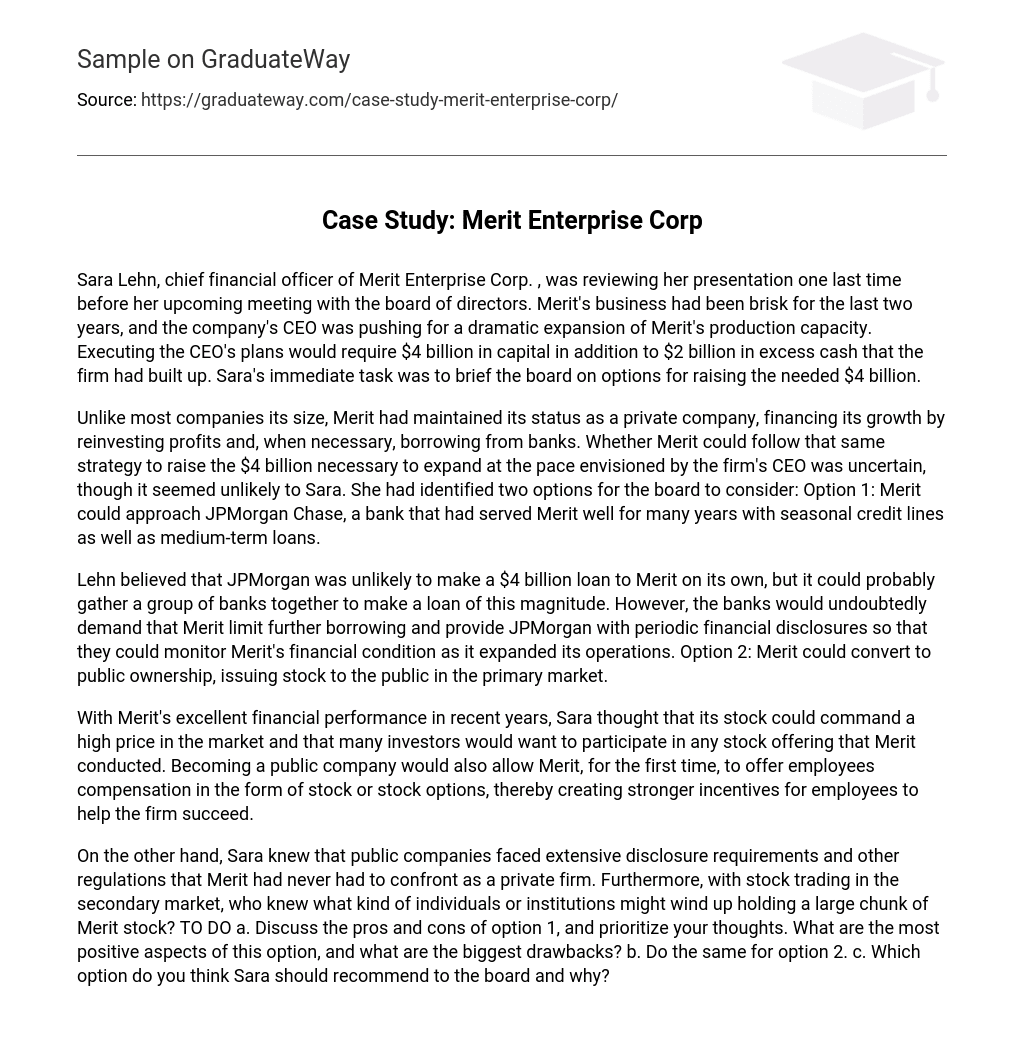Sara Lehn, chief financial officer of Merit Enterprise Corp. , was reviewing her presentation one last time before her upcoming meeting with the board of directors. Merit’s business had been brisk for the last two years, and the company’s CEO was pushing for a dramatic expansion of Merit’s production capacity. Executing the CEO’s plans would require $4 billion in capital in addition to $2 billion in excess cash that the firm had built up. Sara’s immediate task was to brief the board on options for raising the needed $4 billion.
Unlike most companies its size, Merit had maintained its status as a private company, financing its growth by reinvesting profits and, when necessary, borrowing from banks. Whether Merit could follow that same strategy to raise the $4 billion necessary to expand at the pace envisioned by the firm’s CEO was uncertain, though it seemed unlikely to Sara. She had identified two options for the board to consider: Option 1: Merit could approach JPMorgan Chase, a bank that had served Merit well for many years with seasonal credit lines as well as medium-term loans.
Lehn believed that JPMorgan was unlikely to make a $4 billion loan to Merit on its own, but it could probably gather a group of banks together to make a loan of this magnitude. However, the banks would undoubtedly demand that Merit limit further borrowing and provide JPMorgan with periodic financial disclosures so that they could monitor Merit’s financial condition as it expanded its operations. Option 2: Merit could convert to public ownership, issuing stock to the public in the primary market.
With Merit’s excellent financial performance in recent years, Sara thought that its stock could command a high price in the market and that many investors would want to participate in any stock offering that Merit conducted. Becoming a public company would also allow Merit, for the first time, to offer employees compensation in the form of stock or stock options, thereby creating stronger incentives for employees to help the firm succeed.
On the other hand, Sara knew that public companies faced extensive disclosure requirements and other regulations that Merit had never had to confront as a private firm. Furthermore, with stock trading in the secondary market, who knew what kind of individuals or institutions might wind up holding a large chunk of Merit stock? TO DO a. Discuss the pros and cons of option 1, and prioritize your thoughts. What are the most positive aspects of this option, and what are the biggest drawbacks? b. Do the same for option 2. c. Which option do you think Sara should recommend to the board and why?





